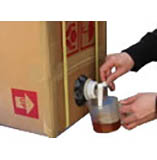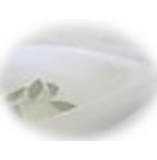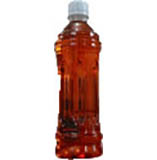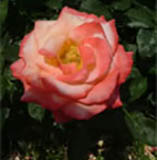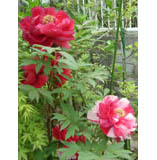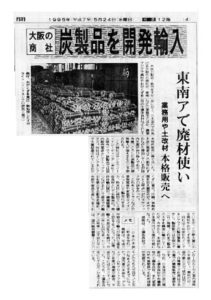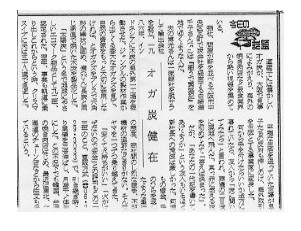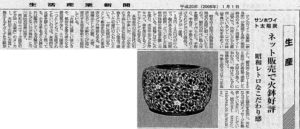“Charcoal saves the earth”

Harmony with nature to Keita Shirasaki, CEO of Sun White Taiyo Charcoal Co., Ltd., which manufactures and sells “Taiyo Charcoal,” which is the first charcoal used in meals to receive the Eco Mark as a product in consideration of the natural environment. We interviewed you about your thoughts on making charcoal.
Focusing on a large amount of “sawdust” from Indonesian timber, our company was founded in 1975, and was originally established as a trading company.In 1986, we started manufacturing the “Taiyo Charcoal” that we are currently selling. The reason for this was that my father, who was then the president, produced a large amount of “sawdust” when processing wood in Indonesia. It started when I focused on.
Indonesia is rich in natural resources, and timber is exported in large quantities overseas.A large amount of sawdust is generated during the process of felling the wood and molding it for export.Focusing on this, my father thought, “Is there a way to use this sawdust well?”After about 4 years, I came up with the idea of charcoal that hardened sawdust, established manufacturing technology, and started working on manufacturing. Currently, the manufactured charcoal is exported to South Korea and Japan.
“Taiyo Charcoal”, an eco-friendly charcoal that is kind to nature “Taiyo Charcoal” manufactured and sold by our company is 100% recycled charcoal that uses only sawdust generated when processing natural wood. It is the first environmentally friendly product that has received the Eco Mark certification for charcoal.We also consider the customers who use charcoal and are particular about quality. We use sawdust from various types of wood as a raw material for solar charcoal, but we have established technology that enables stable quality charcoal regardless of which wood sawdust is used.We have been making efforts to provide high quality charcoal for 17 years since we started charcoal production.
Orders made by 4 pm will be shipped the same day!
Providing “Enjoyable Charcoal Culture” We offer this “Taiyo Charcoal” to yakiniku restaurants, etc., but also to those who enjoy it individually.For individual customers, we also have a shop on the internet “Rakuten”, and if you place an order by 4:00 pm the day before, we can ship on the same day.Recently, there are many people who enjoy grilling meat using charcoal at home, and the amount ordered is increasing year by year. We aim to provide “charcoal culture that can be enjoyed at home” by directly supplying the charcoal used by professional chefs, which cannot be purchased at stores, to such individual customers.In addition to using charcoal for eating, I would also like to propose “playing with charcoal” at the same time, such as creating garden fences and objects using charcoal.
“Coexistence with nature” and “industry creation” created by charcoal
As our management philosophy, we have a desire to do business in a more environmentally friendly manner and to preserve as much nature and resources as possible for the next generation of children.It is a big problem that rapid changes in the environment, such as global warming, have occurred during the last few hundred years of the billions of years of the earth.Unlike fossil fuels such as petroleum, charcoal is a resource that can be used continuously and for a long time without disturbing the harmony with nature by planting trees.However, in recent years, the amount used in restaurants and chains has expanded rapidly and the demand has increased, causing an excessive amount of timber felling due to charcoal production, causing a loss of balance with nature.I would like to achieve coexistence with nature by providing eco-friendly products that use all the wood chips, such as “Taiyo Charcoal.”
Focus on creating industries in developing countries
We are also working hard to create industries in developing countries such as Indonesia, where we have factories that manufacture solar charcoal. In countries such as Indonesia, where natural resources are abundant, the growth of local industries that rely on resource exports is still scarce.
Through our business, we are creating and fostering local industries in these countries and promoting business development so that we can provide stable employment.
Aim to contribute to charcoal-grilled culture by playing in quality
As our future goal, we would like to first increase the current production of coal. However, instead of competing with charcoal from China, which has a low unit price, and prices, we will endeavor to ensure that our customers can choose with quality.The economic environment in recent years is still severe for those who run restaurants such as yakiniku restaurants, but I would like you to do your best to develop charcoal grilling culture. And if our products help us, we can’t be happier.
